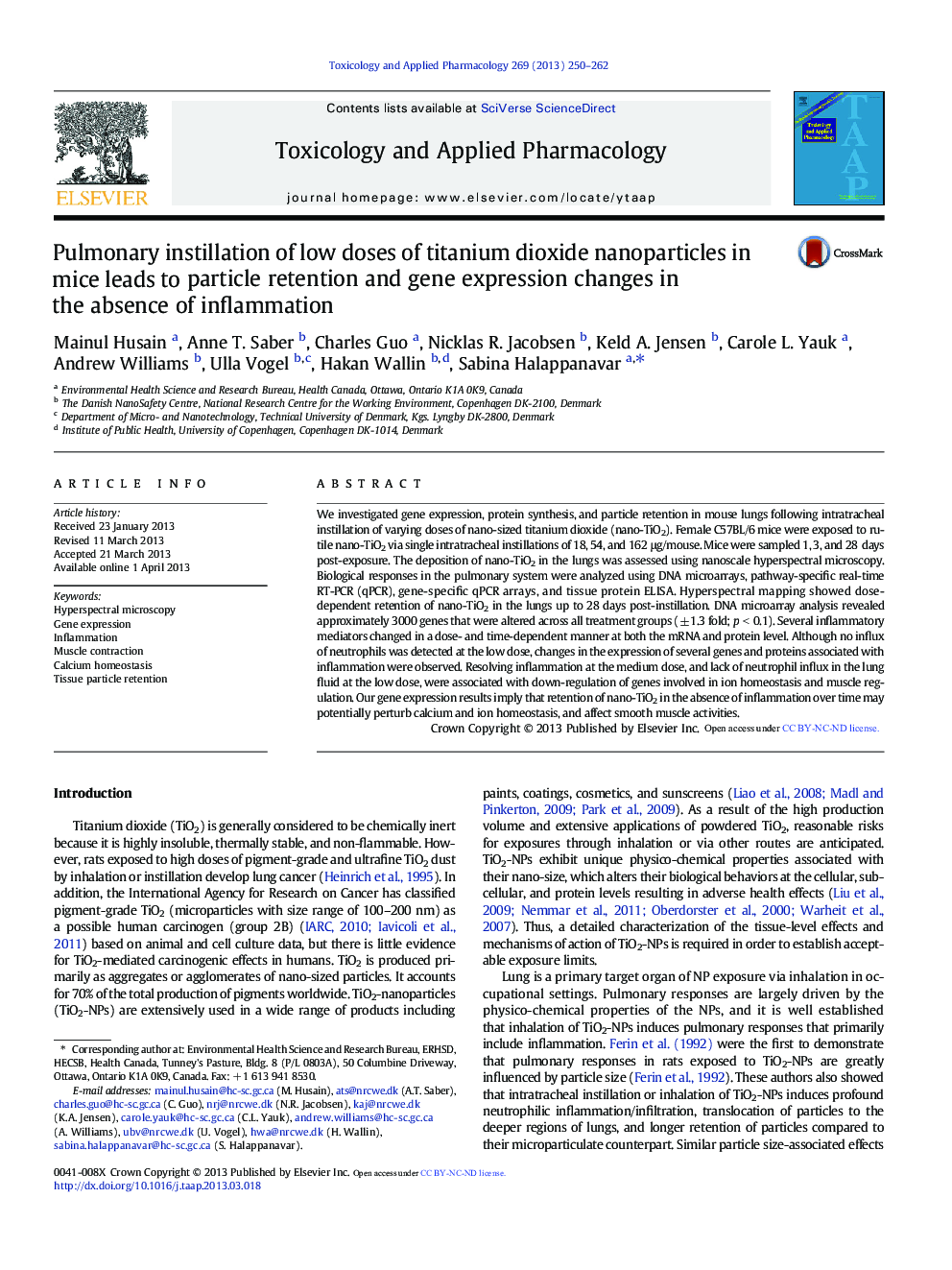| کد مقاله | کد نشریه | سال انتشار | مقاله انگلیسی | نسخه تمام متن |
|---|---|---|---|---|
| 5846431 | 1128481 | 2013 | 13 صفحه PDF | دانلود رایگان |
• Pulmonary effects following exposure to low doses of nano-TiO2 were examined.
• Particle retention in lungs was assessed using nanoscale hyperspectral microscopy.
• Particles persisted up to 28 days in lungs in all dose groups.
• Inflammation was the pathway affected in the high dose group at all time points.
• Ion homeostasis and muscle activity pathways were affected in the low dose group.
We investigated gene expression, protein synthesis, and particle retention in mouse lungs following intratracheal instillation of varying doses of nano-sized titanium dioxide (nano-TiO2). Female C57BL/6 mice were exposed to rutile nano-TiO2 via single intratracheal instillations of 18, 54, and 162 μg/mouse. Mice were sampled 1, 3, and 28 days post-exposure. The deposition of nano-TiO2 in the lungs was assessed using nanoscale hyperspectral microscopy. Biological responses in the pulmonary system were analyzed using DNA microarrays, pathway-specific real-time RT-PCR (qPCR), gene-specific qPCR arrays, and tissue protein ELISA. Hyperspectral mapping showed dose-dependent retention of nano-TiO2 in the lungs up to 28 days post-instillation. DNA microarray analysis revealed approximately 3000 genes that were altered across all treatment groups (± 1.3 fold; p < 0.1). Several inflammatory mediators changed in a dose- and time-dependent manner at both the mRNA and protein level. Although no influx of neutrophils was detected at the low dose, changes in the expression of several genes and proteins associated with inflammation were observed. Resolving inflammation at the medium dose, and lack of neutrophil influx in the lung fluid at the low dose, were associated with down-regulation of genes involved in ion homeostasis and muscle regulation. Our gene expression results imply that retention of nano-TiO2 in the absence of inflammation over time may potentially perturb calcium and ion homeostasis, and affect smooth muscle activities.
Journal: Toxicology and Applied Pharmacology - Volume 269, Issue 3, 15 June 2013, Pages 250–262
